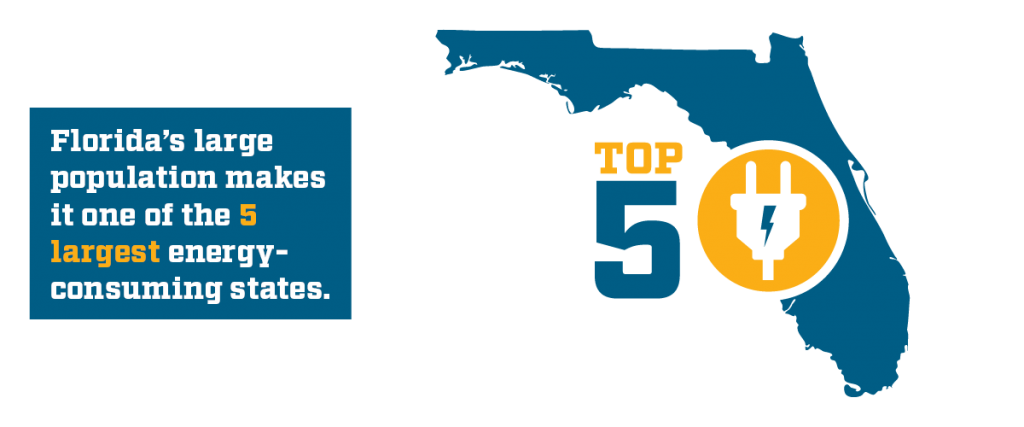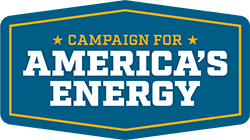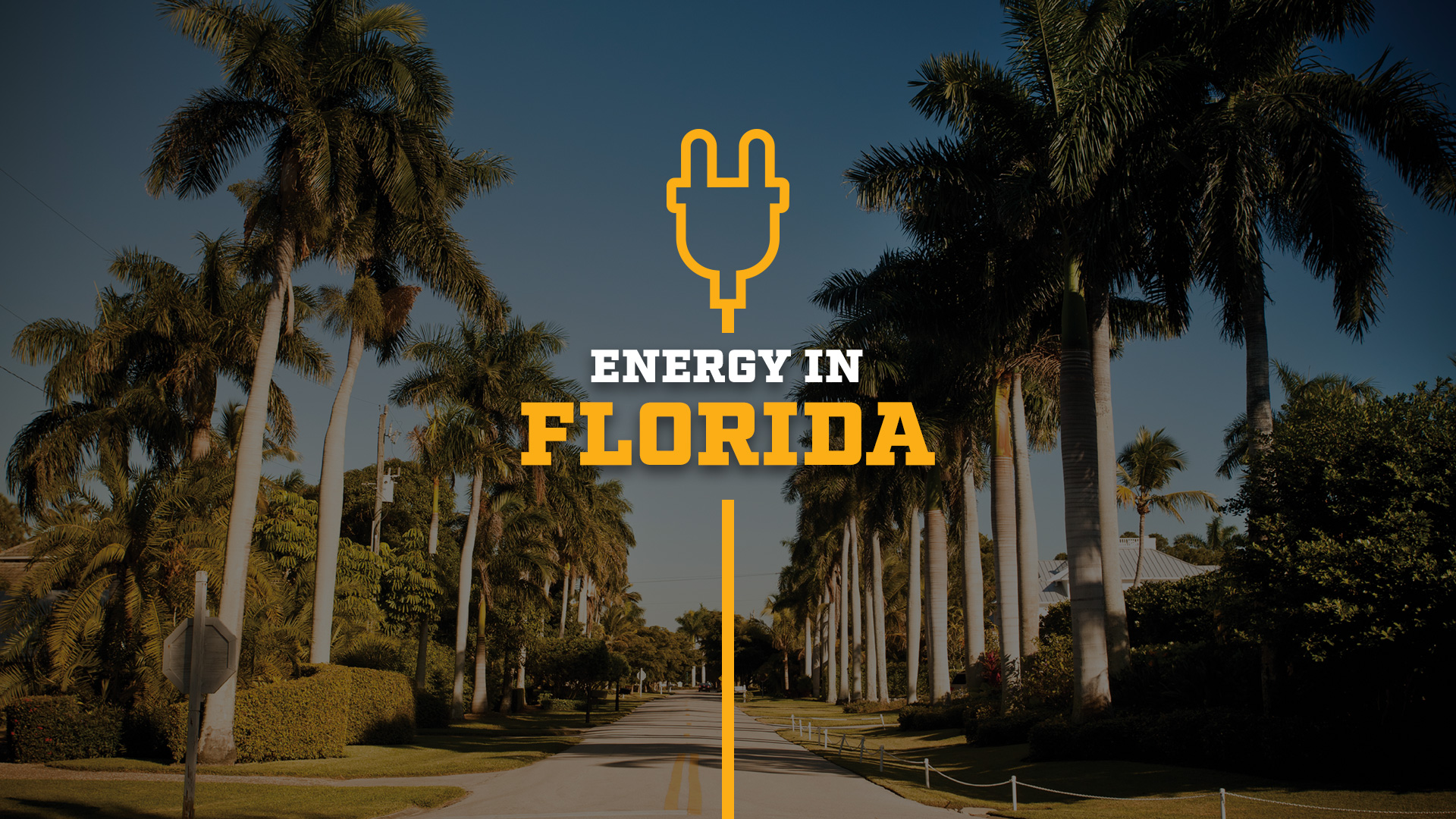Florida State Reports and Facts
“Elected leaders across the state have the opportunity to implement and manage a sensible energy policy that provides solutions to meet our energy needs and keep costs down. That’s why it’s important that Campaign for America’s Energy helps to remind our elected leaders of that opportunity and to understand how energy needs can be met while we also protecting our environment.”
– Brewster Bevis, Associated Industries of Florida

More than 100 million people1 travel to Florida annually to enjoy its sights, sand and world-renowned amusement parks and resorts. On top of the millions of tourists Florida hosts each year, its population has grown exponentially. It now has approximately 20.6 million residents.2
With everything Florida has to offer, it is sometimes easy to forget just how much energy all this requires. The population alone means millions of homes need to be cooled during the hot summers, phones need to be charged, cars need to be fueled to drive to the beach, refrigerators need to be powered to keep locally-produced orange juice cold – and much, much more. And as more than a hundred million tourists from around the world descend on Florida, it is no surprise that the state demands more energy than it produces.
But over the last 10 years, Florida has been the victim of bad federal energy policy choices that have affected the way individuals, families and businesses balance their budgets and meet their bottom lines. It’s time the discussion changes and elected officials take the opportunity to adopt policies that support all types of energy production and delivery as well as environmental stewardship.
Energy is vital for supporting not only growing communities and the economy but for ensuring residents and tourists enjoy the state each year. The amusement parks alone use unimaginable amounts of energy on a daily basis. For example, Disney’s Epcot Mission Space Attraction uses more computer power than NASA’s real space shuttle, and the hydroelectric thruster and cylinder used to bring the Yeti to life atop Expedition Everest uses more power than a 747-jet engine.3 All this in addition to the thousands of hotels, resorts, restaurants, rental homes and boats used by tourists annually.
Speaking of NASA, did you know Florida is highly regarded for its aerospace and aviation industry, which depends immensely on access to abundant energy? The aerospace and aviation industry alone employs almost 100,000 Floridians, paying a little over $6 billion in wages.4 Some of the most famous and monumental rocket launches have occurred at Florida’s own Cape Canaveral Spaceport and Cecil Field Spaceport, including the rocket launch that sent the first man to the moon – a feat that would have been impossible without energy. In fact, it takes nearly the same amount of energy to put a space shuttle into orbit as the average American would normally use in an entire year.5

Energy is not only needed to manufacture parts for rocket ships and airplanes, it’s also needed to support Florida’s manufacturing industry in general. The state is home to over 19,000 manufacturers, employing more than 331,000 workers.6 It’s not just the aerospace and aviation industry that makes and produces things here; Florida’s manufacturing industry is very diverse and includes companies in traditional manufacturing industries, such as electronics, plastics, food processing, and printing. This means that without energy, Florida would be unable to produce its famous orange juice or cotton for clothing, parts for fishing boats and fishing rods,7 or your reliable Tervis tumbler.8 Without energy and the derivatives that come from it, Florida would also be unable to contribute the breakthrough technologies that manufacturers bring to life, such as lasers, photonics, and medical devices.

The fact remains, as Florida continues to grow, phones, computers and TVs will need to be charged, homes will need to be cooled in the summer, and the appliances we use will need power. Unlike other states across the nations, more than half of Florida’s energy consumption goes to the residential sector to ensure Floridian families are able to turn on the lights, cool their homes and businesses, wash clothes, filter water, and much more. Florida residents pay, on average, roughly $132 each month on electricity. While that could be manageable for some, it’s much harder for the roughly 15 percent of residents living in poverty who spend 23 percent of their income on energy.910
As more people live paycheck-to-paycheck, and expenses continue to grow – it is more important than ever to have access to affordable, reliable energy. It’s a must.


